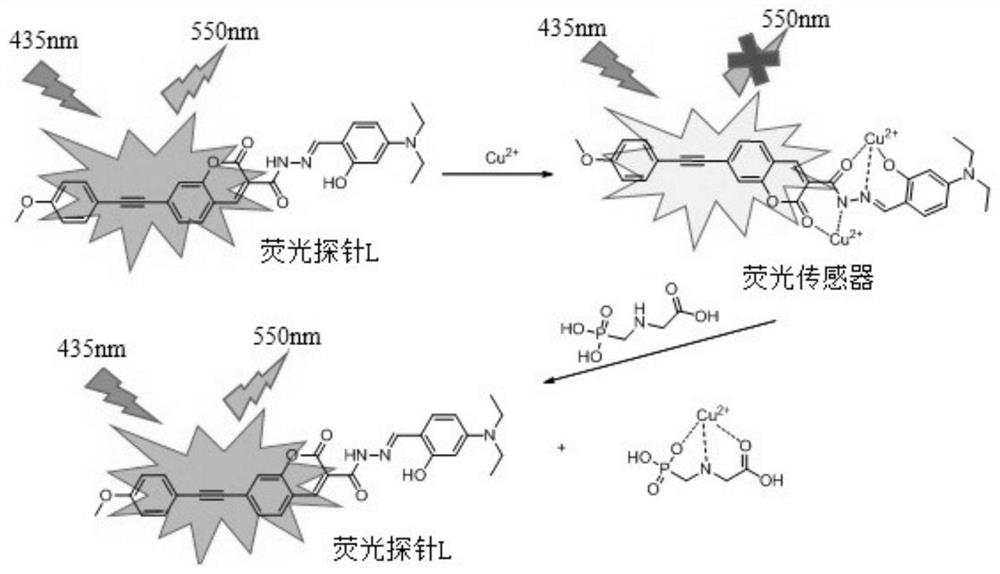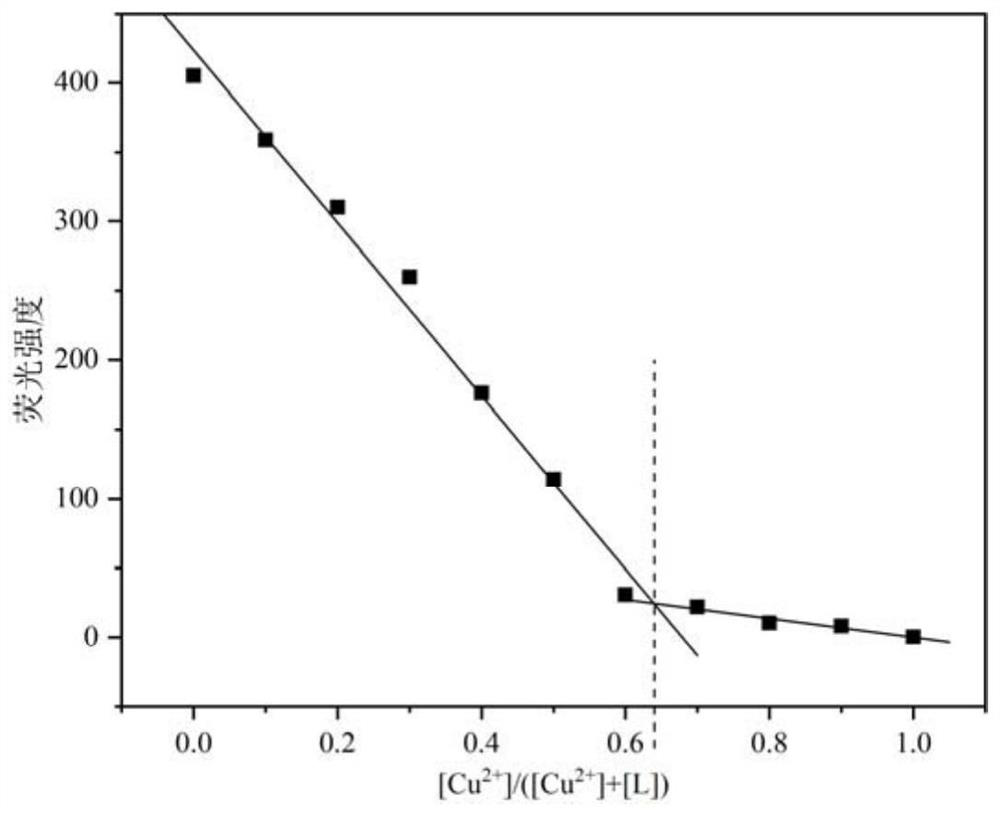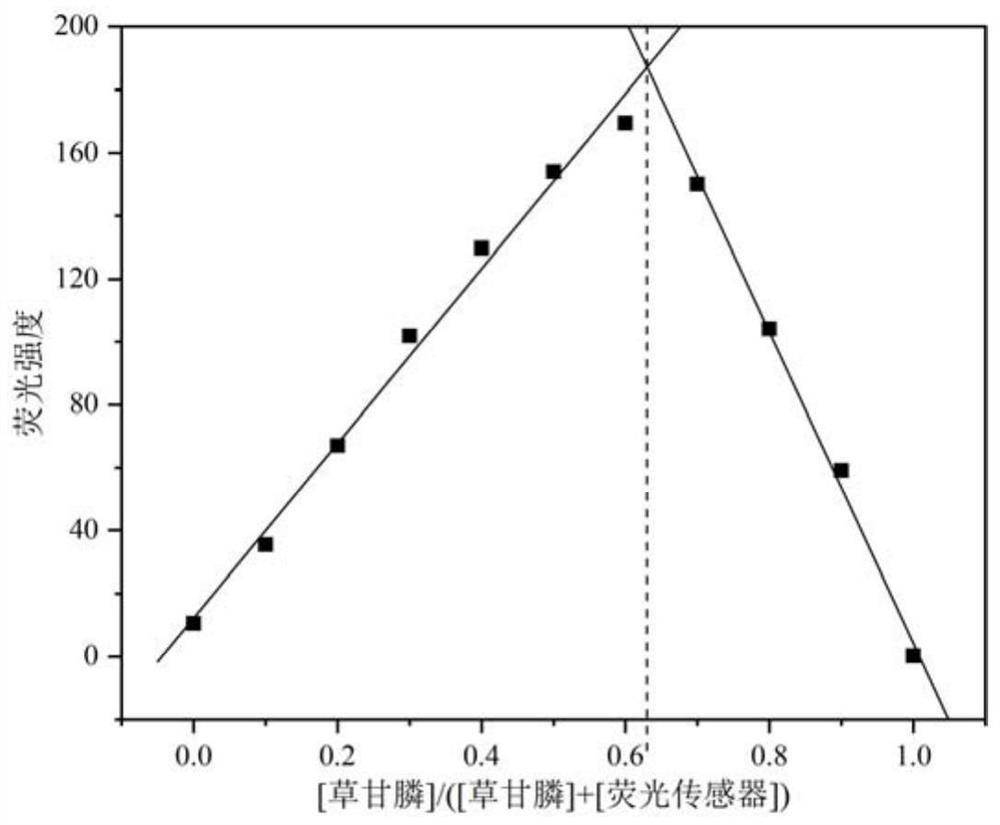Preparation method and application of a fluorescent sensor for detecting glyphosate
A fluorescent sensor and glyphosate technology, applied in the field of glyphosate detection, can solve the problems of difficult large-scale routine detection, long detection time, complicated processing, etc., and achieve the effects of easy visual observation, low cost, and high detection sensitivity
- Summary
- Abstract
- Description
- Claims
- Application Information
AI Technical Summary
Problems solved by technology
Method used
Image
Examples
specific Embodiment approach 1
[0051] Embodiment 1: The preparation method of a fluorescence sensor for detecting glyphosate in this embodiment includes the following steps:
[0052] Dissolve the fluorescent probe L in HEPES buffer solvent to prepare 1.0 × 10 -4 ~1.0×10 -6 mol / L solution, add copper nitrate, and incubate for 2 to 5 minutes to obtain a fluorescence sensor;
[0053] The molecular structure of the fluorescent probe L is:
[0054]
specific Embodiment approach 2
[0055] Embodiment 2: The difference between this embodiment and Embodiment 1 is that the volume ratio of DMSO to water in the HEPES buffer solvent is 7:3. Others are the same as the first embodiment.
specific Embodiment approach 3
[0056] Embodiment 3: This embodiment is different from Embodiment 2 in that: the HEPES concentration in the HEPES buffer solution is 10 mM; and the pH is 5-10. Others are the same as in the second embodiment.
PUM
| Property | Measurement | Unit |
|---|---|---|
| recovery rate | aaaaa | aaaaa |
Abstract
Description
Claims
Application Information
 Login to View More
Login to View More - R&D
- Intellectual Property
- Life Sciences
- Materials
- Tech Scout
- Unparalleled Data Quality
- Higher Quality Content
- 60% Fewer Hallucinations
Browse by: Latest US Patents, China's latest patents, Technical Efficacy Thesaurus, Application Domain, Technology Topic, Popular Technical Reports.
© 2025 PatSnap. All rights reserved.Legal|Privacy policy|Modern Slavery Act Transparency Statement|Sitemap|About US| Contact US: help@patsnap.com



